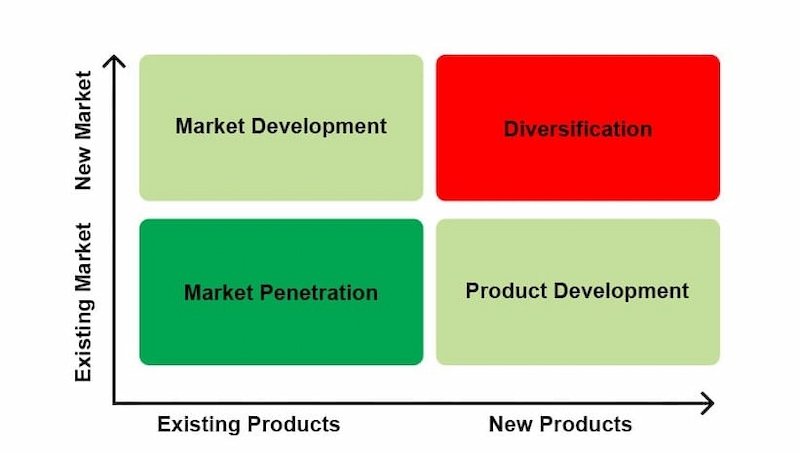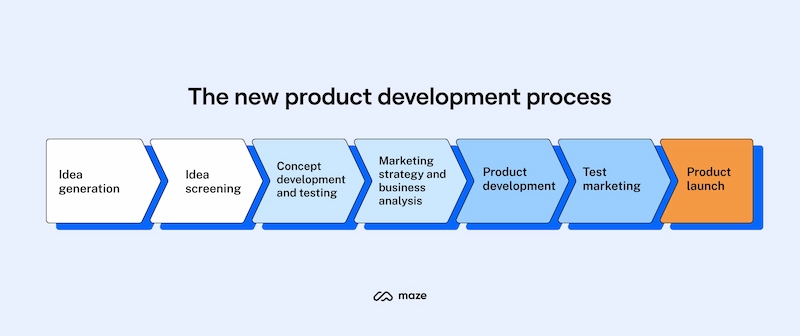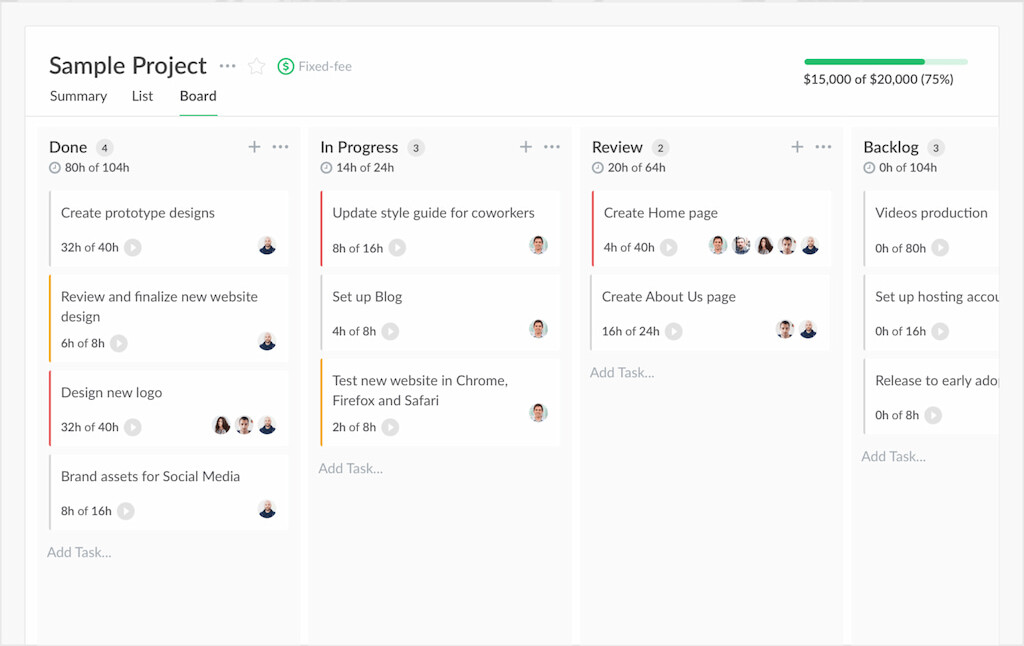A robust product development strategy is essential for turning innovative ideas into successful market offerings. This strategy outlines the approach for creating, developing, and launching products that meet customer needs and drive business growth. It involves identifying market opportunities, defining product goals, and managing the entire development process to ensure alignment with company objectives. From initial concept to market entry and beyond, a well-crafted product development guide helps organizations navigate complexities, prioritize resources, and achieve a competitive advantage in the marketplace. This article explores the key components and best practices for developing an effective product development plan that can propel your business forward.
What is a Product Development Strategy
A product planning and development strategy is a comprehensive plan that outlines how a company will create, develop, and launch new products. It serves as a roadmap for turning ideas into market-ready offerings, ensuring that the product aligns with the company’s goals and meets customer needs. The product and organizational strategy typically includes several key components:
- Objective setting: Define clear goals for the product, such as market expansion, revenue growth, or addressing a specific customer problem.
- Market analysis: Conduct research to understand market trends, customer preferences, and competitor landscape. This helps identify opportunities and potential challenges.
- Concept generation: Develop and evaluate product ideas based on market research and strategic objectives. Refine concepts to ensure they align with customer needs and business goals.
- Design and development: Transform product concepts into tangible prototypes. This phase involves detailed design work, engineering, and iterative testing to ensure the product meets quality and performance standards.
- Testing and validation: Perform rigorous testing to assess the product’s functionality, safety, and user experience. Gather feedback from potential users to make necessary improvements.
- Go-to-market planning: Strategize the product launch, including marketing, distribution, and sales tactics. Ensure that the product reaches the target audience effectively and efficiently.
- Performance monitoring: After launch, track the product’s success through metrics such as sales data, customer feedback, and market performance. Use these insights to make informed adjustments and improvements.
❗ Strategic product planning helps companies systematically bring innovative products to market, enhancing their competitive edge and driving long-term success.

Why Use a Product Development Strategy
Using a product development strategy provides several key advantages:
- Focus and direction: Helps create a clear roadmap for product creation, aligning efforts with company goals and vision. This avoids wasted resources and misaligned initiatives.
- Market alignment: Ensures the product meets market demands by incorporating customer insights and competitive analysis. This increases the likelihood of the product’s success and market acceptance.
- Efficiency: Streamlines the development process by defining stages and milestones. This reduces delays and optimizes resource management.
- Risk management: Identifies potential risks and challenges early, allowing proactive solutions to mitigate risks and adapt strategies as needed.
- Innovation: Encourages systematic exploration and testing of new ideas, fostering creativity and the development of innovative products that stand out in the market.
- Performance tracking: Enables continuous monitoring and evaluation of the product’s success, facilitating data-driven decisions and adjustments based on real-time feedback.
- Competitive advantage: Helps maintain a competitive edge by delivering well-thought-out products that meet evolving customer needs, leading to better market positioning and increased profitability.
Overall, a product development marketing strategy guides the successful creation and launch of products, driving growth and achieving business objectives.
Stages of Product Development
Understanding the stages of product development helps ensure that each phase is executed effectively, from initial concept through to market launch. Here’s a breakdown of the key stages:
1. Idea generation
- Brainstorming sessions: Generate new ideas through group brainstorming.
- Market research: Identify unmet needs and trends to inspire new product concepts.
- Customer feedback: Use input from customers to spark new ideas and innovations.
2. Idea screening
- Evaluate feasibility: Assess ideas for technical and financial viability.
- Prioritize ideas: Rank ideas based on potential impact and alignment with company goals.
- Eliminate non-viable ideas: Discard ideas that do not meet necessary criteria.
3. Concept development and testing
- Create prototypes: Develop early versions of the product to test ideas.
- Conduct market tests: Collect feedback from potential customers on the product concept.
- Refine the concept: Make improvements based on feedback and test results.
4. Business analysis
- Conduct cost analysis: Estimate production costs and pricing strategies.
- Assess profitability: Project potential revenue and profitability of the product.
- Analyze market potential: Evaluate the market size and growth opportunities.
5. Product development
- Develop final product: Design and produce the final version of the product.
- Test and refine: Conduct rigorous testing to ensure product quality and functionality.
- Prepare for launch: Develop marketing and distribution plans for product introduction.
6. Market testing
- Launch pilot programs: Introduce the product to a small segment of the market.
- Gather feedback: Collect and analyze customer feedback from the pilot program.
- Adjust marketing strategies: Refine marketing and distribution based on test results.
7. Commercialization
- Full-scale launch: Release the product to the broader market.
- Monitor performance: Track sales, customer satisfaction, and market response.
- Adjust strategies: Make necessary changes to improve market penetration and sales.
8. Post-launch evaluation
- Analyze performance metrics: Review sales data, customer feedback, and market trends.
- Identify improvements: Recognize areas for product enhancement and development.
- Plan for future updates: Develop strategies for product updates and iterations based on evaluation.

❗ Each stage is crucial for ensuring that the product not only meets market needs but also achieves commercial success.
How to Create a Product Development Strategy
Creating a successful product development strategy is critical for turning innovative ideas into marketable products. Here’s a guide on developing a product development strategy, covering each stage in detail:
1. Define objectives and goals
- Establish clear goals: Begin by identifying the specific goals you want to achieve with the new product. This might include increasing market share, entering a new market segment, or enhancing customer satisfaction. Clear goals will provide direction and focus throughout the product development process.
- Align with company strategy: Ensure that your product development goals align with your company’s broader strategic objectives. For instance, if your company is focused on innovation, your product development strategy should prioritize cutting-edge features and technologies. This alignment helps maintain coherence between different departments and initiatives within your organization.
2. Conduct market research
- Identify market needs: Comprehensive market research is essential to understand the needs, preferences, and pain points of your target audience. Use surveys, focus groups, and data analytics to gather insights into what customers are looking for. This step is crucial for developing a product that genuinely meets market demands and stands out from competitors.
- Analyze competition: A thorough analysis of your competitors’ products and strategies will help you identify gaps in the market and areas where you can differentiate your product. Study their strengths and weaknesses, pricing strategies, and customer feedback.
3. Develop product concept
- Generate ideas: With a clear understanding of the market, brainstorm and develop potential product ideas. Encourage creativity and collaboration within your team, considering various perspectives and expertise. This stage often involves generating multiple concepts, which can later be refined and evaluated.
- Create prototypes: Once you have a promising concept, develop initial prototypes or mock-ups. Prototyping allows you to explore the feasibility of your ideas, test different design options, and gather early feedback from stakeholders. Prototypes also help identify potential technical challenges and areas for improvement before moving on to full-scale development.
4. Formulate a new product strategy
- Develop a strategic product design: At this stage, translate your product concept into a detailed design plan. This involves specifying the product’s features, functionality, and user experience. Consider how the product will meet customer needs and how it will differentiate itself from competitors. Strategic product design should also take into account cost efficiency and manufacturability.
- Set a new-product strategy development plan: Outline the steps, timelines, and resources needed to bring the product to market. This plan should include milestones for each phase of development, from initial concept refinement to production and launch. A well-structured plan ensures that the project stays on track and that all team members are aligned with the project’s objectives.
5. Create a product development business plan
- Define development stages: Common stages include concept development, design, testing, production, and launch. Each stage should have specific objectives, deliverables, and timelines. For example, the testing phase might involve both internal quality assurance and external beta testing to identify potential issues before the product is released to the market.
- Allocate resources: Determine the budget, personnel, and technology required for each stage of development. Effective resource allocation ensures that your team has the tools and support needed to meet project deadlines and deliver a high-quality product. This includes securing the necessary funding, hiring or training staff with the required skills, and selecting the right technologies to support product development.
6. Utilize technology
- Incorporate technology: Leverage modern technology to streamline the product development process. For example, using advanced design tools can speed up the creation of prototypes, while project management software can improve communication and collaboration among team members. Time trackers like Everhour help track time, manage tasks, and monitor progress, ensuring that your team stays on schedule and within budget. The right technology can also enhance the product itself, adding features that improve user experience or reduce production costs.

- Optimize processes: Technology can also be used to improve the efficiency of your development processes. For example, automation tools can reduce the time spent on repetitive tasks, while data analytics can provide insights that help you make more informed decisions. Continuous process optimization is key to maintaining a competitive edge in product development.
7. Implement and monitor
- Launch pilot programs: Before a full-scale launch, consider releasing your product in a limited market or to a select group of users. This pilot phase allows you to gather real-world feedback and make necessary adjustments. It also helps mitigate the risk of a large-scale launch by identifying and addressing unforeseen issues.
- Monitor progress: Track the product’s performance against the objectives and metrics defined earlier in the process. This includes monitoring sales, customer feedback, and operational efficiency.
8. Evaluate and refine
- Analyze performance: The analysis should include sales data, customer feedback, and internal performance metrics. Understanding what worked and what didn’t is crucial for refining the product and informing future development efforts.
- Iterate and improve: Product development is an ongoing process. Use the insights gained from the evaluation phase to make improvements and updates to the product. This could involve adding new features, improving existing ones, or addressing any issues that have arisen since the product launch.
❗ By thoroughly addressing each of these stages, you can create a comprehensive product development strategy that guides your product from concept to successful market launch. This approach helps you develop a product strategy that meets market demands and ensures that your product development efforts align with your company’s overall business objectives. Whether you’re working on new product development strategies or refining an existing product, a well-structured strategy is essential for achieving long-term success.
Conclusion
Crafting a successful product development strategy is essential for any company. A well-executed strategy not only guides the new product development life cycle but also aligns with broader business objectives. By focusing on clear goals, conducting thorough market research, and leveraging technology, your new-product strategy development is more likely to succeed.
Using technology for the development of new products creates opportunities for efficiency and innovation. A company’s product development strategy should be flexible enough to accommodate these shifts while still driving long-term growth. Incorporating tools like Everhour into your process can further enhance your ability to manage timelines, resources, and project milestones effectively, supporting a robust product development growth strategy. With the right approach, you can navigate the complexities of product development and bring successful products to market consistently.
If you are managing a team of 5 or more and looking to boost efficiency, Everhour is the perfect tool to keep your team on track. With seamless time tracking, you can easily estimate task durations, set clear budgets, and generate detailed reports inside Asana, Trello, Jira, or any other pm tool.

